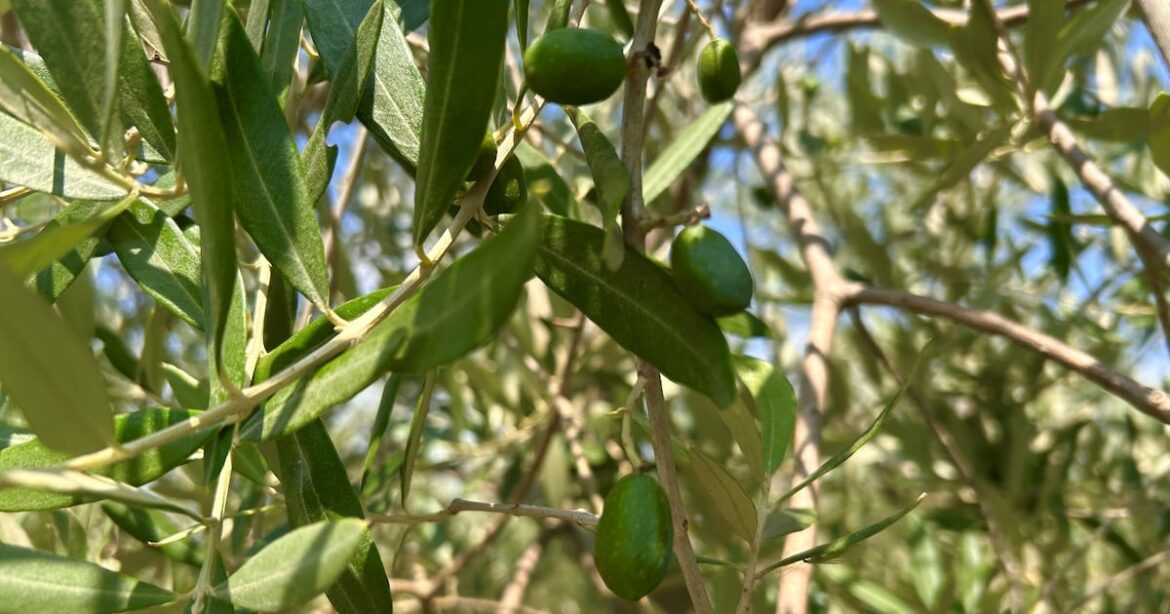Researchers in Greece tested whether consuming EVOO daily improved lipid profiles in hyperlipidemic patients, comparing the effects of different phenolic concentrations in EVOO while total polyphenol intake was the same.
They sought to addresses key questions for both consumers and producers regarding the value of higher-phenolic EVOO.
“From a public health and commercial perspective, these results suggest that olive oil producers should consider investing in the development of high-polyphenol EVOO formulations, as they may offer greater therapeutic value at lower serving sizes,” they wrote in the journal Nutrients.
Olive oil impact on lipid profiles and atherosclerosis risk
The health benefits that come from a polyphenol-rich EVOO is well established. Polyphenols such as hydroxytyrosol, tyrosol, oleocanthal, oleacein, oleuropein aglycon, and ligstroside aglycon have demonstrated antioxidant, anti-inflammatory, and cardioprotective effects, and have been found to enhance vascular endothelial function and improve lipid profiles.
Lipid profiles can act as an indicator of cardiovascular health, as abnormal levels have been found to contribute to atherosclerosis, a major cause of cardiovascular disease (CVD). Hyperlipidemia, a disorder characterized by elevated levels of lipids, is the leading modifiable risk factor for CVD.
Multiple studies have investigated the effect of dietary strategies like polyphenol-rich EVOO to improve lipid metabolism. EU Regulation states that olive oils with over 5 mg of certain polyphenols per 20 g can claim health benefits by protecting blood lipids from oxidative stress. Some clinical trials have shown dose-dependent effects of EVOO phenols on lowering LDL oxidation and raising HDL, with one study finding that 25 mL of high-phenolic EVOO reduced LDL oxidation, while refined low-phenolic oil increased it.
However, according to the researchers, previous studies haven’t compared the effects of different EVOO phenolic concentrations at matched polyphenol doses.
Improving cholesterol with olive oil
The researchers conducted the single-blind, randomized clinical trial at the General Hospital of Messinia in Kalamata, Greece, recruiting 50 patients diagnosed with hyperlipidemia.
They randomly assigned patients to two intervention groups, recruiting an additional 20 healthy volunteers to join as a comparison group.
Both groups consumed an equal daily dose of polyphenols at 8.3 mg, but one group received 20 g/day of lower-phenolic EVOO (414 mg/kg), and another received 8 g/day of higher-phenolic EVOO (1021 mg/kg). The healthy controls followed the same protocol. Both olive oils came from the same Koroneiki olive variety and had similar lipid profiles.
The intervention lasted four weeks, and the researchers monitored compliance through phone calls and by collecting returned bottles. They collected fasting blood samples at baseline and after the four-week intervention and assessed primary lipid profile outcomes: total cholesterol, LDL-C, HDL-C, triglycerides, Lp(a), ApoA1, and ApoB.
Results showed that consumption of both EVOOs significantly improved lipid profiles by reducing atherogenic lipids like lipoprotein(a) and increasing protective HDL cholesterol levels. Significantly, high-phenolic EVOO at lower doses proved more effective in lowering total cholesterol than low-phenolic EVOO at higher doses, despite the matched polyphenol content.
“The enhanced efficacy of the higher-phenolic EVOO administered at a lower dose may be attributed to the higher polyphenol-to-lipid ratio, which is hypothesized to improve absorption efficiency,” wrote the researchers.
“During digestion, olive oil forms micelles that incorporate both lipids and polyphenols. When the same amount of polyphenols is delivered in a smaller lipid volume, the polyphenols may be more accessible at the micelle surface, facilitating more efficient uptake across the intestinal barrier.”
They added that lower lipid volumes might accelerate gastric emptying and release phenolic compounds more rapidly while minimizing interference from other fat-soluble components which could potentially explain why equivalent doses of polyphenols when delivered in a more concentrated lipid matrix, offered more promising lipid-lowering effects.
“This supports the hypothesis that the concentration and bioavailability of polyphenols are more important than the absolute lipid quantity consumed,” the researchers concluded.
They noted that future research should confirm the findings in diverse populations and with a longer follow-up and more comprehensive biomarker analysis.
Source: Nutrients 2025, 17(15), 2543. doi: https://doi.org/10.3390/nu17152543. “Effects of High-Phenolic Extra Virgin Olive Oil (EVOO) on the Lipid Profile of Patients with Hyperlipidemia: A Randomized Clinical Trial”. Authors: Kourek, C. et al.


Dining and Cooking